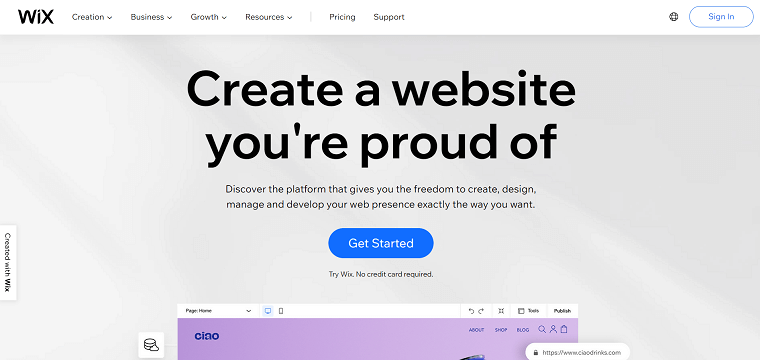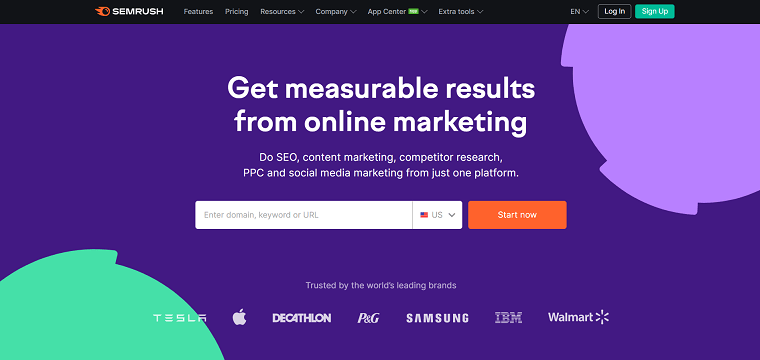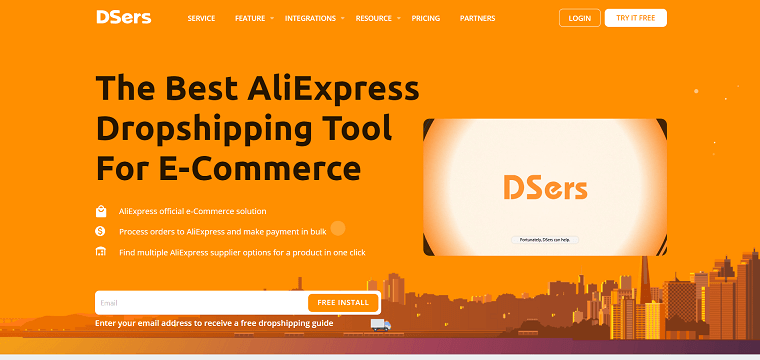8 Top Landing Page Design Tips to Drive Conversion

Industries around the world have moved their marketing activities online. Landing pages can help companies develop effective marketing strategies to promote products and services. Appealing landing pages drive traffic to your online store because they are designed to engage visitors and lead them further into the conversion channel.
The landing page design needs to be flawless and attractive. The question is, how do you design a landing page that is effective enough so that visitors will buy or subscribe?
What Is a Landing Page Design
A landing page is a web page that allows consumers to log in to your website. It is usually a page that serves a single, focused purpose, unlike your home page or any other page. The landing page serves as a follow-up to any promises made in the content. In essence, this is the next step for visitors. Landing page allows you to make a trade, a special offer, a message, or a trade-in exchange for providing contact information.
In digital marketing, a landing page is a standalone web page that was created specifically for a marketing or advertising campaign. This is where visitors “log in” after clicking on a link in an email or an ad from Google, Bing, YouTube, Facebook, Instagram, Twitter, or similar places on the web.
Unlike most web pages, landing pages aim to actively stop customers from exploring and push visitors closer to CTA buttons. This is why so many landing pages hide the site's regular menus or remove links from the header and footer areas. Your landing page CTA can focus on generating or encouraging clicks from potential customers.
Why Landing Page Design Important
You have done an excellent job of building your brand and creating a website that represents it. Now you have to make sure all that hard work translates into sales. If you are looking for an effective lead conversion tool, the landing page is a great choice. Landing page designing is a great way to increase traffic, improve search engine optimization (SEO), and build your personal brand.
The landing page is one of the simplest and most effective ways for online business owners to generate more leads. It might make sense to dig a hole to investigate this in more detail. People want to find the information they are searching for more quickly and efficiently.
8 Top Tips for Designing an Effective Landing Page
If landing pages are so important, why doesn't every business use them? Well, there's a misconception that it’s hard to create and maintain landing pages. Fortunately, this is not the case. Building an effective landing page is not about showing off, it's about getting consumers what they're looking for.
1. Concise Copy
It would be better to highlight the unique value proposition (UVP) content on your landing page. The content you offer will depend on the type of product or service you sell. Remember, you have about 8 seconds to convince the user that your offer is worth pursuing. Too much piling information may overwhelm visitors or even force them to leave the page immediately. Talk to your audience in plain English and tell them what you can do to make their lives better.

When it comes to your title and description, focus on succinct information. It's easier said than done, but it's critical to the user experience. Based on this accuracy, a 2018 study by Microsoft found that the average human attention span is just 8 seconds. The focus should be on explaining how your brand or product can benefit users in straightforward language.
2. Clean UI
This brings us to our next point: visually, the layout of the landing page should be clean. For landing page design, simplicity equals clarity. Cluttered landing pages often distract, confuse, or overwhelm visitors. You’d better embrace white space and keep the text and images on the page simple and to the point.

To make your landing page easy for visitors to navigate and digest, you should avoid clutter, leave lots of white space, and break up large chunks of text. If you are adding a registration form to the landing page, do not add too many fields. Instead, keep it fast and simple by leaving room only for the most important details: the visitor's name, email address, and perhaps their job title.
3. Strong CTA
Call-to-action (CTA) statements and buttons on the landing page have a big impact on conversion rates. This is the final boundary of the landing page before the user submits information or goes to the payment page. Ideally, each landing page should have only one to three CTA buttons or statements.

While scrolling through the landing page, customers will find a CTA button that convinces them to buy a product, download content, or subscribe to the weekly email. It is also helpful to feature introductions or answer common problems customers may encounter.
This can include a range of pain points, such as the user's time, money, or energy. After knowing how your product will solve customers’ problems, the landing page should delve deeper into functionality. Try to display testimonials or social evidence of why your product works near the bottom of the page.
4. Alluring Visuals
Just like text, photos can enhance the way visitors participate in your services. Visual reasoning skills enable humans to process and interpret meaning from what they see. Visual cues can convey additional information to your visitors. It also provides high-quality photos that show the best of your products or services. Be sure to hire a visual photographer to provide you with transferable photos.

If one or more images are used, especially for banner or headline images, it should attract attention and complement your offer in a visual form. You can also embed video as a visual element on the page. Videos are great for demonstrating complex products, such as software.
Here is one important thing you need to remember when designing your landing page: make sure they're responsive on mobile devices! It takes a little extra effort to optimize your mobile landing page, so it will look good, load quickly, and will be easy to navigate. You'll appreciate the time you spent when your conversion rates improve dramatically.
5. Harmonious Brand Color
The color you choose for your landing page may have a slight effect on how visitors end their actions—leaving the site or logging in. Color psychology is powerful, and people have a natural response to certain colors. For example, blue is associated with trust, power, and reliability, which is why many financial brands use blue. Green is associated with growth, harmony, and freshness, so it is often used by health brands.

The best landing pages should include a popular color. Studies show that using color in marketing materials can increase brand awareness and sales by up to 80%. Think about it, whether it's a red wildflower in a field or a rainbow against a blue sky, colors have a natural appeal.
Before you get obsessed with colors, though, remember that they still need to match the look and feel of your brand. This ensures that your brand is consistent across all platforms and helps visitors instantly connect your landing page to your business. Try to create a standout landing page using brand colors that contrast with other elements of the site.
6. Mobile-friendly Design
We live in the age of smartphones, and most of our daily tasks, including surfing the Internet and buying products, are done on the phones. This means that your landing page must be mobile-friendly.
To expand their reach, brands have adopted mobile-first strategies, as half of all web activity comes from mobile devices. Your landing page should have a responsive design to help customers understand the full scope of the page and get a reply asap. An effective landing page will look great on a mobile device and be very easy to click on.

You can't ignore mobile-end devices when designing your landing page. While developing strategies, it’s necessary to adopt responsive design and create mobile-friendly pages to provide a better browsing experience. Having a landing page that loads fast, has perfect graphics, and works smoothly on all devices increases your chances of conversion. You can use web design and development tools to automatically apply changes to both page versions.
7. Social Sharing Encouragement
Another effective landing page design tip is to make the page shareable on social media. People who view your landing page might spread the word to their followers. While this strategy won't drive conversion directly, it can increase clicks on the page. And the more visitors you bring in, the more likely you are to increase your rates of conversion.

To reduce clutter, just be sure to include only the buttons for social platforms that your audience is using. You can also add email forwarding options, as everyone has different sharing preferences. Remember, even if your social media contacts never buy from you, there's always a chance that someone in their network will get to know you.
8. A/B Testing the Design
It's not enough just to finish a landing page. You also need to test whether it works or not. To check if your landing page can drive conversion, you need to perform A/B tests to gather valuable analysis of how users interact with the landing page. Exactly what to test depends on the source of the traffic and the end goal that you can set in the testing tool. For example, the test content could inlu test how often a visitor clicks a button, watches a video, or sends a sales lead form. In addition, you can see how users log in to your page and what type of device they are using.
While there are a few best practices for optimizing landing pages, consumer psychology will surprise you. If you have conflicts over a particular landing page design, the best thing to do is run an experiment that tests different versions of your page.
Show slightly changed versions to different people - for example, try adjusting the color and position of the CTA - and check which version works best. According to the conversion benchmark report, the average conversion rate for landing pages is 9.7%, so you'll want to aim for that or more.
Final Word
The Internet is flooded with thousands of people who want to engage with your brand, so you have to give them a clear path to reach you. The landing page is the direct path for them, and it’s also your direct path to a high conversion rate.












 Company
Company
 Why Choose DSers
Why Choose DSers
 Blog
Blog
 Help Center
Help Center




 Live Chat
Live Chat